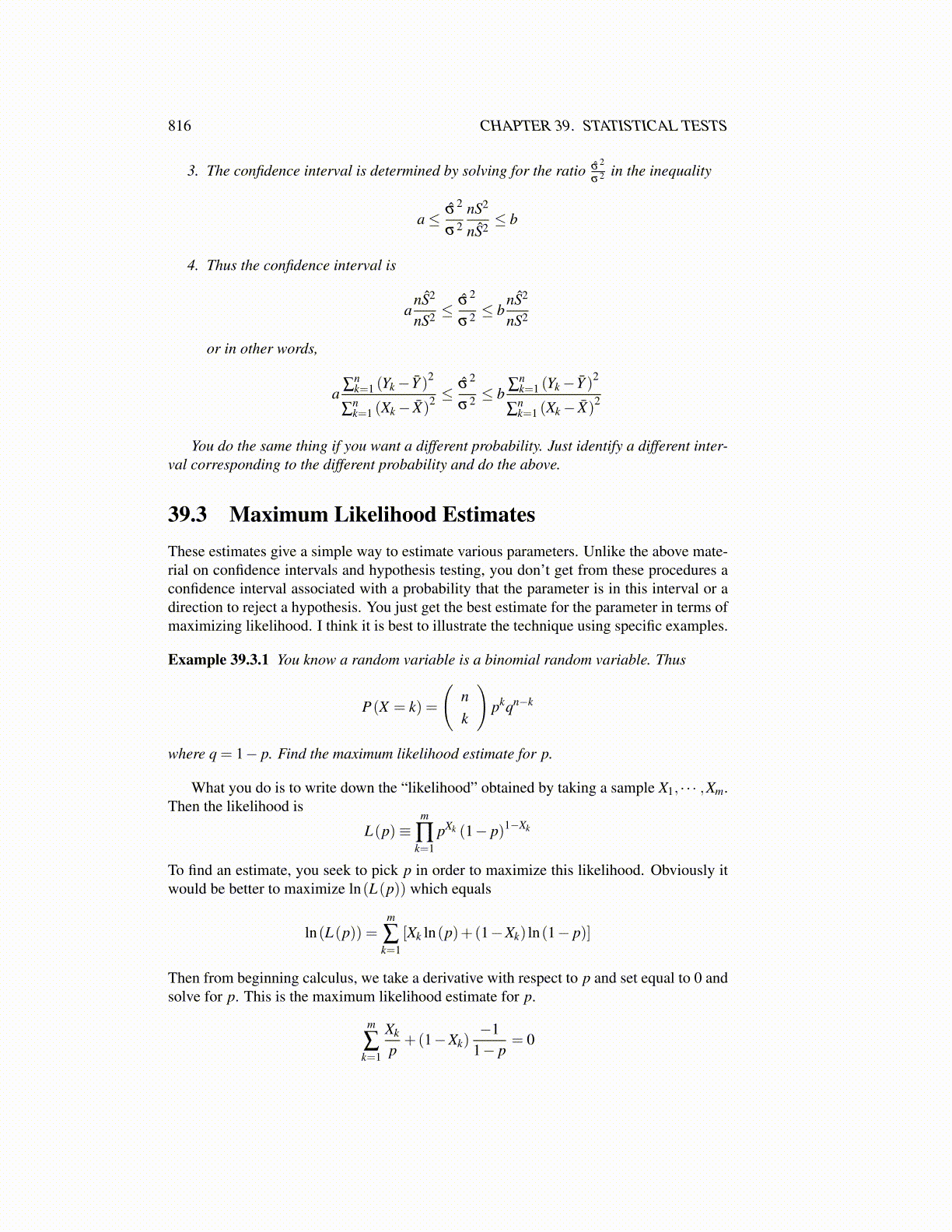
816 CHAPTER 39. STATISTICAL TESTS
3. The confidence interval is determined by solving for the ratio σ̂2
σ2 in the inequality
a≤ σ̂2
σ2nS2
nŜ2≤ b
4. Thus the confidence interval is
anŜ2
nS2 ≤σ̂
2
σ2 ≤ bnŜ2
nS2
or in other words,
a∑
nk=1 (Yk− Ȳ )2
∑nk=1 (Xk− X̄)
2 ≤σ̂
2
σ2 ≤ b∑
nk=1 (Yk− Ȳ )2
∑nk=1 (Xk− X̄)
2
You do the same thing if you want a different probability. Just identify a different inter-val corresponding to the different probability and do the above.
39.3 Maximum Likelihood EstimatesThese estimates give a simple way to estimate various parameters. Unlike the above mate-rial on confidence intervals and hypothesis testing, you don’t get from these procedures aconfidence interval associated with a probability that the parameter is in this interval or adirection to reject a hypothesis. You just get the best estimate for the parameter in terms ofmaximizing likelihood. I think it is best to illustrate the technique using specific examples.
Example 39.3.1 You know a random variable is a binomial random variable. Thus
P(X = k) =
(nk
)pkqn−k
where q = 1− p. Find the maximum likelihood estimate for p.
What you do is to write down the “likelihood” obtained by taking a sample X1, · · · ,Xm.Then the likelihood is
L(p)≡m
∏k=1
pXk (1− p)1−Xk
To find an estimate, you seek to pick p in order to maximize this likelihood. Obviously itwould be better to maximize ln(L(p)) which equals
ln(L(p)) =m
∑k=1
[Xk ln(p)+(1−Xk) ln(1− p)]
Then from beginning calculus, we take a derivative with respect to p and set equal to 0 andsolve for p. This is the maximum likelihood estimate for p.
m
∑k=1
Xk
p+(1−Xk)
−11− p
= 0